- Regular
- £19.99
- Sale
- £19.99
- Regular
- £19.99
- Unit Price
- per
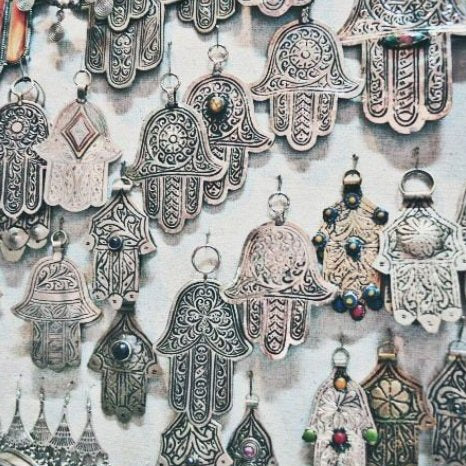
Everything you needed to know about the Hamsa Hand
You may have noticed that our jewellery collections often feature hand charms and this is no coincidence The hand is one of the oldest symbols used in adornment. From the Palaeolithic cave paintings of stencilled hands, to early jewellery traced back to Mesopotamia 4,000 BC (modern day Iraq) where it was associated with the goddesses Inanna and Istar. The symbol spread to Egypt where it was known as the 'Hand of the All Goodness' or 'Mano Pantea' and featured two fingers and a thumb, representing the deities Osiris, Isis and Horus. The Hamsa Hand is still used widely across much of the Middle East and North Africa for everything from jewellery to wall hangings and textiles.
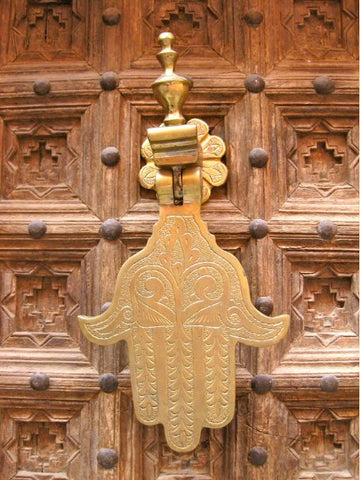
Hamsa Hand door knocker in Marrakesh (Pintrest)
The Hamsa comes in many different designs, most commonly the symmetrical hand with two thumbs and ornate carvings. Its appearance is anatomically incorrect because in Judaism and Islam it’s forbidden to make any kind of idols or reproductions of the human form. It's believed that the Hamsa facing down brings fertility, the answer to prayers and all the abundance of goodness in the universe. Facing upwards, it's a universal sign against evil and a powerful protection symbol.
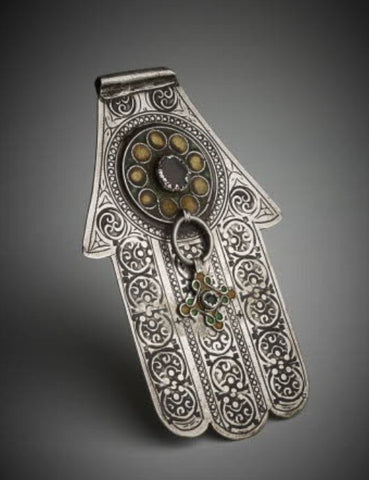
Silver Hamsa - The Bristish Museum
Islam
In Islam, the Hamsa is known as 'the Hand of Fatima', named after Fatima Zahra the daughter of the Prophet known as 'al-Zahra' or 'the shining one'. It also represents the 5 pillars of Islam.
Judaism
In Judaism it is called 'the Hand of Miriam' after the sister of Moses and Aaron. The five fingers are said to be a reminder to praise god with the five senses. The word Hamsa comes from Hebrew which is one of the oldest languages in the world. It’s derived from the name 'Heh' which is one of God's many names.
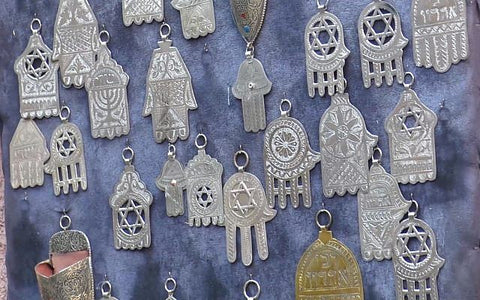
Traditional Jewish hamsa charms (Ziv Genesove/ Times of Israel)
Buddhism
In Buddhism it's associated with the five hand gestures known as 'mudra', which are performed for spiritual protection. It also represents the connections between the five senses and the five chakras.
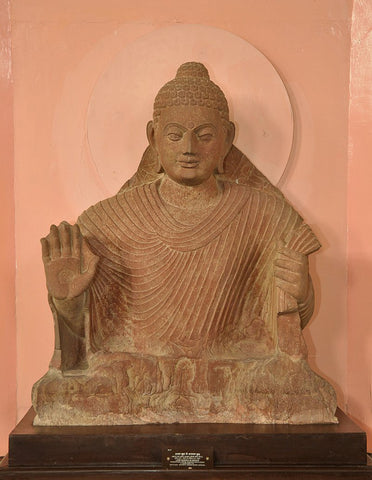
Buddha with right hand in Abhaya Mudra
Christianity
Whilst the hand is not a traditional Christian symbol, to Levantine Christians it's known as 'the Hand of Mary' after Jesus mother and represents the divine feminine aspects of generosity, humility and faith in God. In traditional Mexican artwork, it acts as a reminder of the crucifixion.
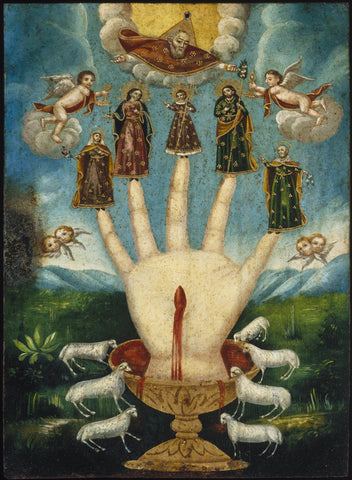
Mano Poderosa (The All Powerful Hand) 19th century oil on metal - Brooklyn Museum
There are many more variations of the hand used throughout the world as protection charms. For example, the 'azabacke' which is Latin-Caribbean bead made from black amber carved into the shape of a fist and worn as jewellery to ward off curses. In Italy, the Figa Fist or 'mano figa' is associated with fertility and luck and also serves as an obscene gesture to ward off witchcraft.
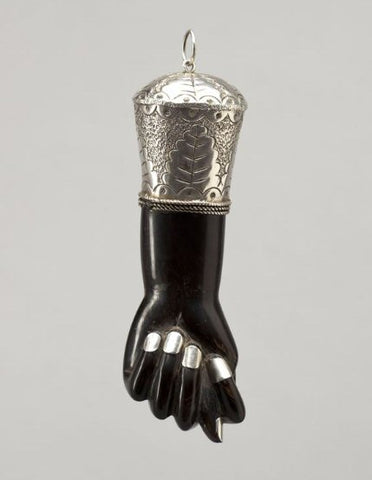
Mano Figa Charm (Pinterest)
However, the common thread is that the hand symbol is a powerful ancient amulet that manifests luck, health, fertility, protection, happiness and good fortune. In many cultures, there is the belief that if a person with evil thoughts or jealousy gazes at you, their 'evil eye' can curse you. By wearing a hand charm, this negativity is blocked.
As the Hamsa is a universal symbol you don't need to follow a certain religion or culture to wear it. It's often sported by celebrities including Madonna, Jennifer Aniston and Megan Markle.
If you want to get your hands on a Hamsa, here are some from our collection.
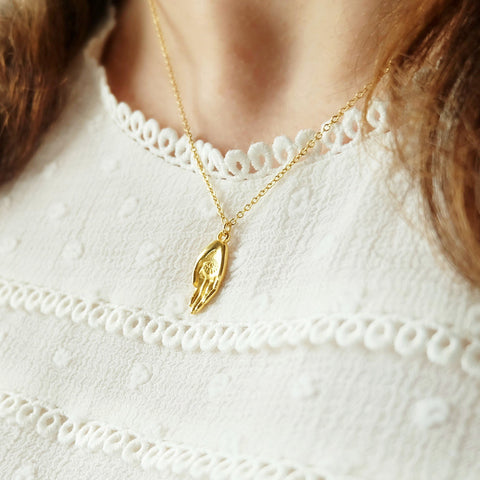
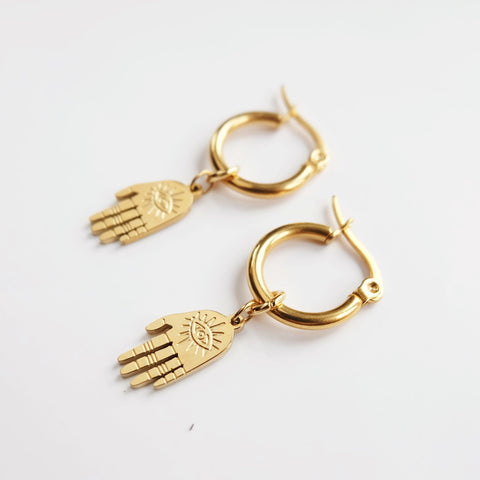
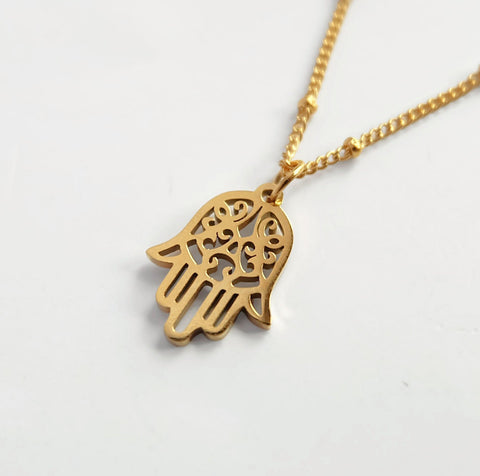
0 comments